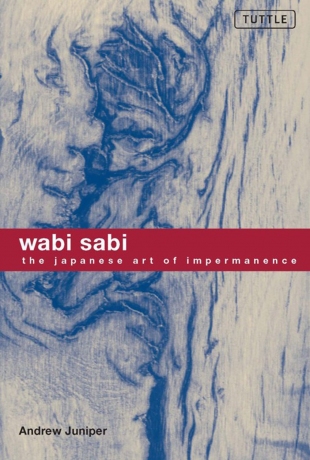"Zen monks lead a simple and austere life constantly aware of their mortality. Wabi sabi art is a distillation of their humble efforts to try and express, in physical form, their love of life balanced against the sense of serene sadness that is life's inevitable passing," writes Andrew Juniper, who runs the Wabi Sabi Design Gallery in West Sussex, England. "As the artistic mouthpiece of the Zen movement, wabi sabi art embodies the lives of the monks and is built on the precepts of simplicity, humility, restraint, naturalness, joy, and melancholy as well as the defining element of impermanence. Wabi sabi art challenges us to unlearn our views of beauty and to rediscover the intimate beauty to be found in the smallest details of nature's artistry."
In this elegantly rendered paperback, Juniper explains the Japanese aesthetic and philosophy that lies behind the simple beauty of a tea ceremony, a vase with a crack in it, a flower arrangement, or a melancholy poem. In contrast to the Western celebration of permanence, grandeur, symmetry, and perfection, wabi sabi suggests there is glory in impermanence, humility, asymmetry, and imperfection.
Juniper shows the impact of Zen and Taoism upon this approach to art and design. For example, in the art of flower arrangement, there is an emphasis upon restraint: "The mood of the flower artist, then, as with the potters, gardeners, and poets, shows a deep respect and humility toward life, allowing the expression to come from nature rather than a man-made construct. The minimal expression used in chabana flower arranging is again reinforcing the idea that less is indeed more and in some ways the work of an artist is as much in what they refrain from adding as what they put in."
Wabi Sabi: The Japanese Art of Impermanence offers a rounded and revealing look at beauty and simplicity.
